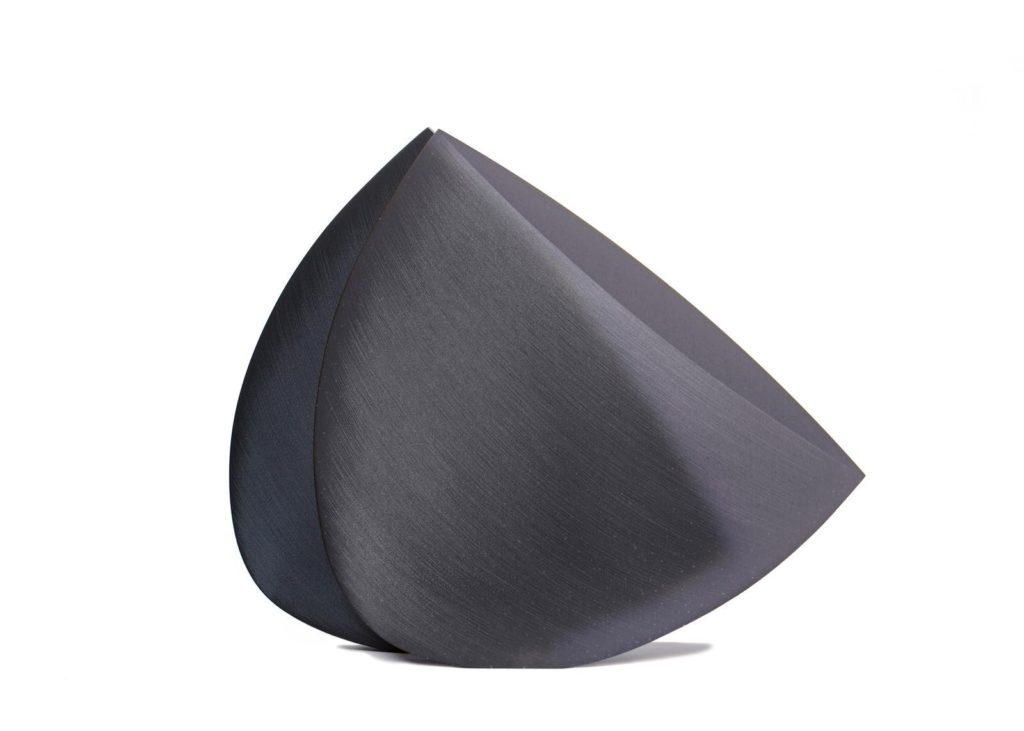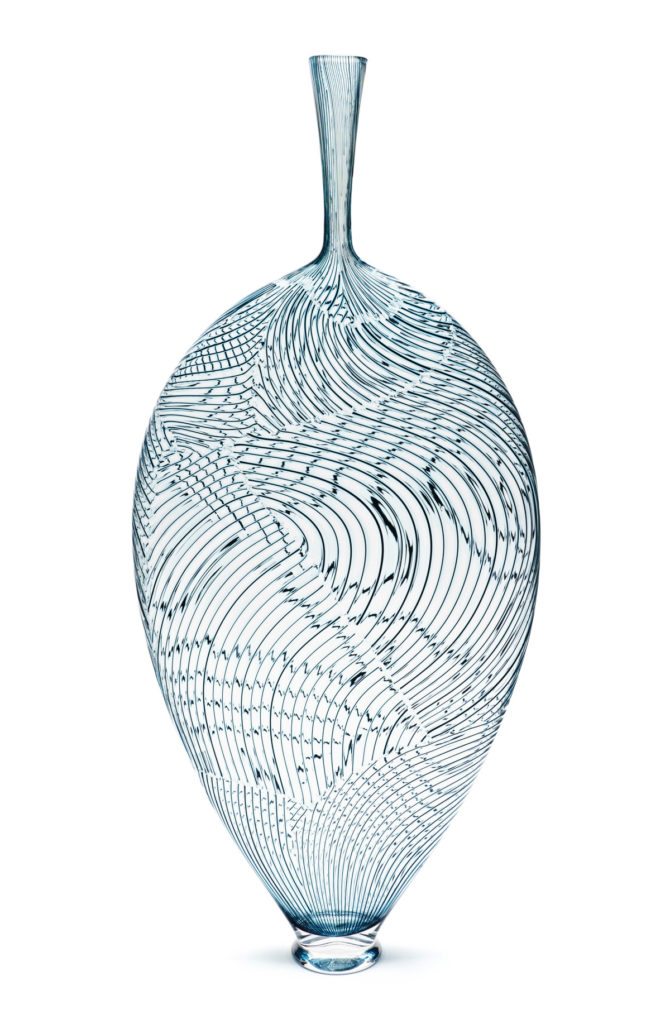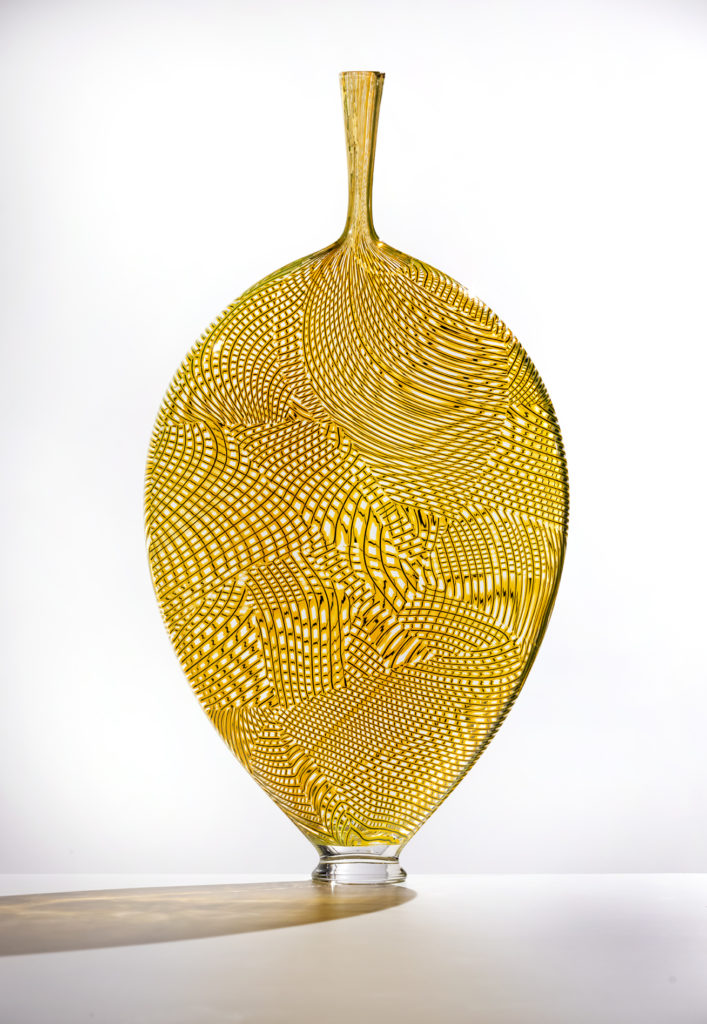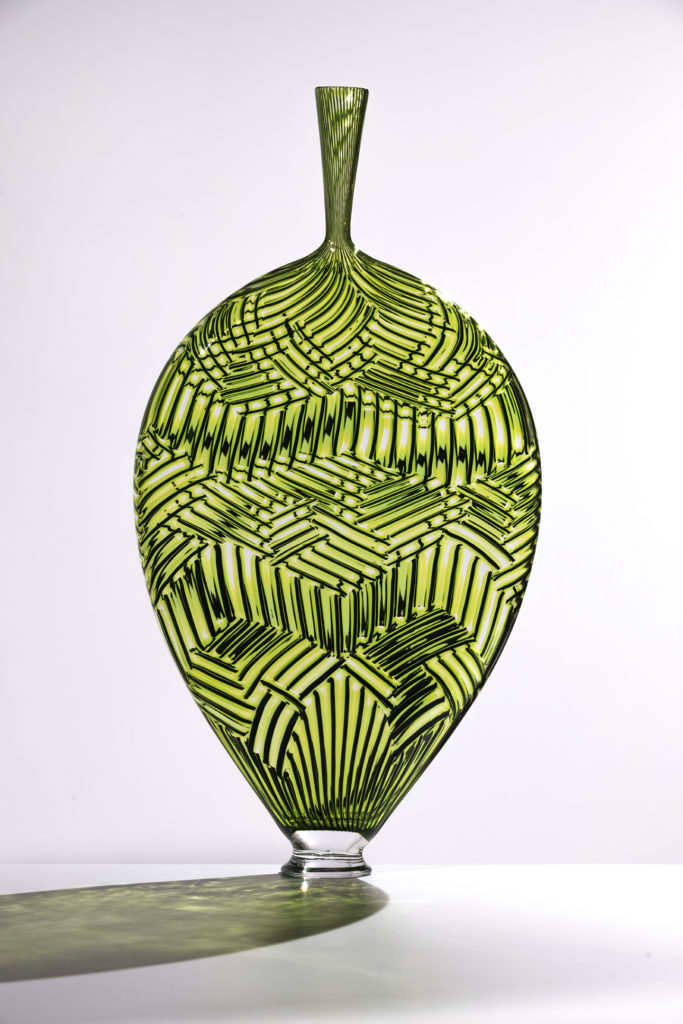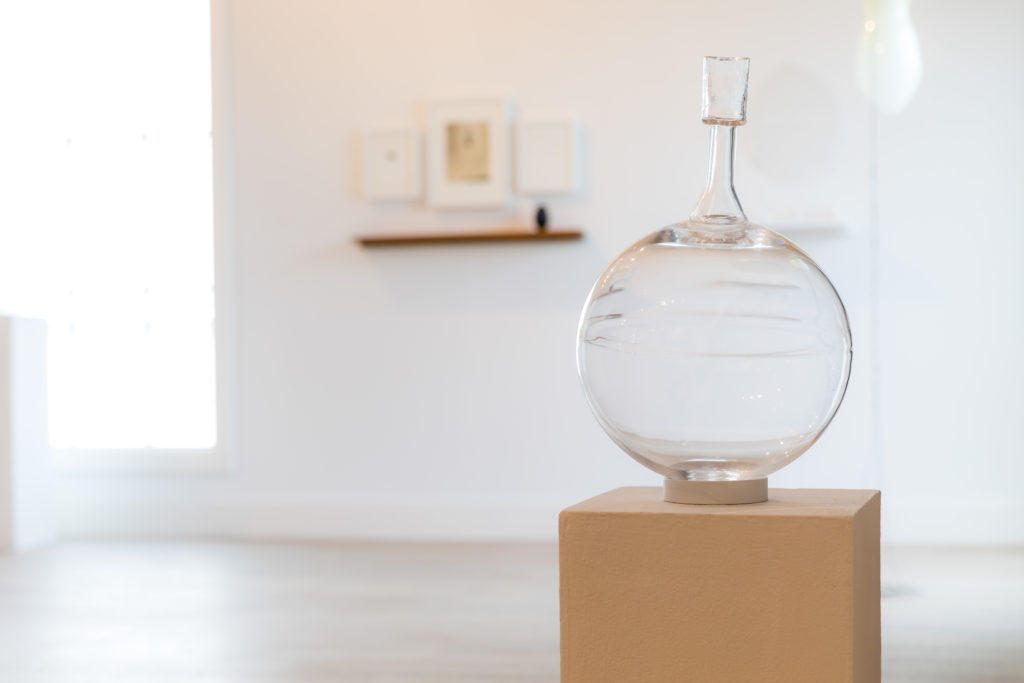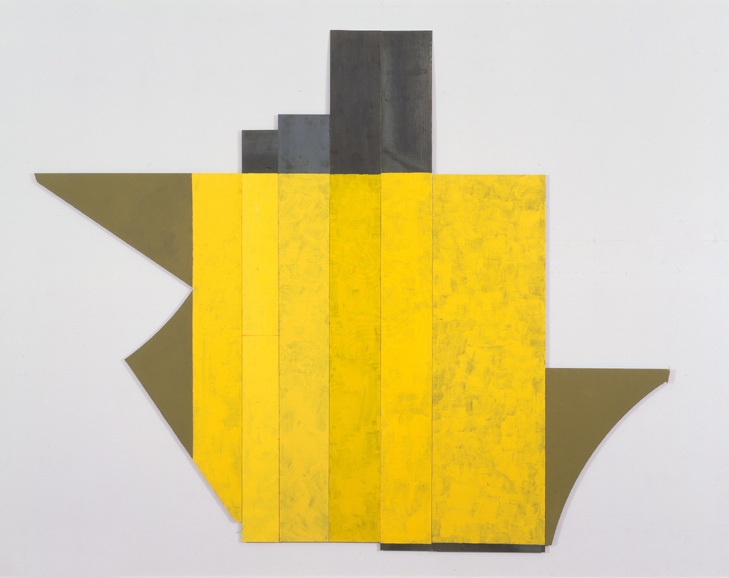Group Artist Exhibition | 2021
Traver Gallery is pleased to present our annual Gallery Artist Group Exhibition. This exhibition presents a carefully curated selection of artworks from our 2021 exhibitions. The artists included are Mel Douglas, Jessica Jane Julius, Jun Kaneko, John Kiley, Harold Hollingsworth, Dante Marioni, Rachel Moore, Erica Rosenfeld, April Surgent, and Merrill Wagner. The diverse artworks presented highlight the artists’ distinct approaches to their chosen mediums and their artistic processes.
-
About
Mel Douglas - view profile
Mel Douglas is one of the most celebrated artists working in glass today. Douglas’s refined and detailed work employs a minimalist aesthetic along with considered mark-making to engage a dialogue of how line and form can define and defy our understanding of space and volume. Douglas’ work explores the potential, versatility, and flexibility of glass as a material for drawing, and with it, expands our view of glass as a sculptural medium.
In Douglas’s words, “objects and drawings are often thought of as two separate entities. my pieces explore and interweave the creative possibilities of this liminal space, where the form is not just a support for drawing; but a three-dimensional drawing itself. Using the unique qualities of the material and the rich potential of mark-making on and with glass, I am using line as a way to inform, define and enable dimensional space”.
Mel Douglas has worked as an independent studio artist since graduating from the Canberra School of Art, Australian National University, in 2000. In 2020 Douglas was awarded a Ph.d. for her practice-lead research investigating how we can understand studio glass through the aesthetics of drawing. In addition to winning the 2020 and 2014 tom Malone Prize- a prestigious award through which a work is acquired each year into the collection of the National Gallery of Western Australia – Douglas has received several major awards, including the Ranamok Glass Prize in 2002 and the International Young Glass Award in 2007 from the Ebeltoft Museum of Glass.
In 2019 her work was the inaugural acquisition for the Australian National Gallery of Art’s Robert and Eugenie Bell Decorative Arts and Design fund. Douglas’ work is held in the private collections and public institutions internationally, including the Corning Museum of Glass, The Chrysler Museum of Art, the Ebeltoft Museum of Glass, and the National Gallery of Australia.
-
Jun Kaneko
- view profile
Jun Kaneko was born in Nagoya, Japan in 1942. He studied painting with Satoshi Ogawa during his adolescence – working in his studio during the day and attending high school in the evening. He came to the United States in 1963 to continue his studies at Chouinard Institute of Art when his introduction to Fred Marer drew him to sculptural ceramics. He proceeded to study with Peter Voulkos, Paul Soldner, and Jerry Rothman in California during the time now defined as The Contemporary Ceramics Movement in America. The following decade, Kaneko taught at some of the nation’s leading art schools, including Scripps College, Rhode Island School of Design and Cranbrook Academy of Art.
Based in Omaha since 1986, Jun Kaneko has worked at several experimental studios including European Ceramic Work Center in The Netherlands, Otsuka Omi Ceramic Company in Japan, Fabric Workshop in Philadelphia PA, Bullseye Glass in Portland OR, Acadia Summer Arts Program in Bar Harbor ME, and Aguacate in Puerto Vallarta, Mexico. Over the course of his career, he has partnered with industrial facilities to realize large-scale, hand-built sculptures. The first was his 1982-1983 Omaha Project at Omaha Brickworks. Later sculptures include his Fremont Project, completed in 1992-1994 in California, and most recently his Pittsburg Project completed in 2004-2007 in Kansas. Both of these later series of sculptures were created at Mission Clay Products. In April 2013, his exhibition Myths, Legends and Truths opened at Millennium Park in Chicago featuring thirteen nine-and-a-half foot tall Dangos and twenty-three of his Tanukis. This new body of work by Kaneko draws upon the myths and legends of the tanuki figure.
His artwork appears in numerous international and national solo and group exhibitions annually and is included in more than seventy museum collections. He has realized over thirty public art commissions in the United States and Japan and is the recipient of national, state and organization fellowships. Kaneko holds honorary doctorates from the University of Nebraska, the Massachusetts College of Art & Design and the Royal College of Art in London.
Kaneko is increasingly drawn to installations that promote civic interaction. He has completed over fifty public art commissions, including his two three hundred and fifty foot long Tile Walls at Aquarium Station in Boston, MA (1993-2000), a 3-story high wall in the Biology Library at The University of Connecticut (1997) and at the the Mashima Sports Arena in Osaka Japan (1994); permanent plaza installations in Council Bluffs and Des Moines, IA (2007 and 2013), at Bartle Hall and Convention Center in Kansas City, KS (2006), and at the International Finance Center in Shanghai, China (2012). In 2014 his fifty-six foot tall Glass Tower, Plaza Design, and Tile Wall will be permanently installed in Lincoln, NE.
Jun Kaneko’s new design for San Francisco Opera’s production of Mozart’s The Magic Flute is currently touring the United States. It opened in San Francisco, Omaha, Kansas City. Its final performance will take place at The Washington National Opera at The John F. Kennedy Center. His production of Puccini’s Madame Butterfly, which premiered at Opera Omaha in March 2006, opened in June 2014 at the San Francisco Opera.
In 1998, he and his wife Ree Kaneko formed a non-profit cultural organization in Omaha Nebraska called KANEKO that explores and encourages the process of creativity. KANEKO is headquartered in landmark, turn-of-the-century warehouses in the Old Market District of Omaha, Nebraska. Jun Kaneko continues his dedication to life as an artist and as a cultural catalyst for the region.
-
John Kiley
- view profile
American, b. 1973, Seattle, USA, based in Seattle and San Francisco, USA.
John Kiley, a renowned artist at the forefront of contemporary glass sculpture, is known for his groundbreaking exploration at the intersection of sculpture, blown glass, and architectural forms. With a unique blend of technical expertise and artistic vision, Kiley’s work transcends boundaries with a dynamic interplay of light, structure, and spatial relationships.
Kiley’s affinity for glass was evident from an early age. As a teenager, he experimented with painting on glass. Later, he refined his skills through formal training and apprenticeships with master artists, including 16 years with Lino Tagliapietra, developing a deep understanding of traditional glassblowing and fabrication techniques.
Kiley’s sculptures frequently incorporate individual elements into larger frameworks, showcasing his meticulous attention to detail and risk-taking approach. Whether creating towering structures, intricate blown glass orbs, or delicately assembled shattered blocks, each series exemplifies his ability to seemingly defy gravity. Through this creative process, he explores the inherent tension between chaos and order, strength and fragility, resulting in works that evoke metamorphosis and the intrinsic beauty of imperfection.
In addition to his solo work, Kiley is known for his collaborative projects with architects, engineers, and other master artists, pushing the boundaries of what is possible within the realm of glass in sculpture. His willingness to experiment with scale, materials, and techniques have earned him widespread acclaim and recognition, with his work featured in galleries, museums, and public spaces worldwide.
-
Harold Hollingsworth
- view profile
The work of Harold Hollingsworth is characterized by colorful eruptions, rich surfaces and rhythmic playfulness. The tossed off elements and poetic debris of our common modern environment influence on his work – weathered advertisements, paper flyers peeling off walls, fonts and moments of graphic abstraction in everyday life. In the past, he has used familiar images such as old road sign graphics, vintage and modern letter forms, along with numbers, crossed with natural and accidental forms found in nature. Recent works are more subtle translations of modernist forms that mirror graphics that are cut free of their original meaning.
A graduate of Western Washington University, Harold has also been shaped greatly by the teaching style and bravado of professor and artist, R. Allen Jensen. Harold showed with Galleria Potatohead and Linda Farris Gallery after graduating from Western Washington University in 1989. He has shown with Elizabeth Leach Gallery in Portland, Circa Gallery in Minneapolis and has been shown recently in residence at Takt – Berlin Germany.
A native of Seattle, Harold has presented 17 solo shows and participated in 38 group shows. His work resonates not only with individual collectors, but corporate investors as well. Approximately 25 Nordstrom stores around the country display Harold’s work. The Target Corporation, Twitter, and Hilton Hotels along with Swedish Hospital have work by Harold.
-
Erica Rosenfeld
- view profile
Her own work is held in private and public collections nationally and has been featured in exhibitions at the Museum of Arts and Design, New York, NY, Kentucky Museum of Art, Louisville, KY, Racine Art Museum, Racine, WI, Museum of American Glass, Millville, NJ and the John Michael Kohler Arts Center, Sheboygan, WI. Erica has taught at Pilchuck Glass School, Urban Glass, The Corning Museum and Worchester Center for Crafts; she has been a visiting artist at Tyler School of Art, San Jose State, University of the Arts, Pratt University and University of Louisville. Her work is included in the collection of the Museum of Arts and Design and The Museum of American Glass. Erica also has been featured in various publications including The New York Times, Glass Magazine, New York Magazine and American Craft.
-
April Surgent
- view profile
April Surgent started working with glass in 1997, at open-access hot shop studios in her hometown of Seattle, WA. She went on to study at the Australian National University, Canberra, Australia where she graduated with honors in 2004. In 2003, she changed her focus from blown to wheel-engraved glass after studying under Czech master engraver Jiri Harcuba at the Pilchuck Glass School. She has been engraving for 20 years, interested in contemporary approaches to the traditional craft of wheel engraving. Notable recognitions for her work include a 2009 Behnke Foundation Neddy Fellowship, a 2016 USA Ford Fellowship, and acquisitions by Iowa State University and the Smithsonian’s, American Art Museum.
Observation and in-depth research inform her work discussing our changing planet. Her interest in natural history, applied science, and climate change have led her from Antarctica to Alaska studying vulnerable species and ecosystems. In 2013, she worked at Palmer station as a recipient of the National Science Foundations’, Antarctic Artist and Writers Program and in 2016 as a volunteer field biologist for the Hawaiian Monk Seal Research Program. Most recently Surgent has worked in Southwest Alaska with the US Geological Survey assisting with pelagic food web research. Surgent lives and works on the Quimper Peninsula in Washington state.
-
Merrill Wagner
- view profile
Wagner works in a wide range of media, including drawing, painting, time-based projects, book works and sculptural interventions. Her work aligns itself with both the principles of Minimalism, and the ethics of an alchemist. She manipulates materials to make works that are about the passing of time and material transformation.
A big departure from her oil on canvas works of the 60’s, the tape works from the 70’s showcase Wagner’s unique process of using tape (cloth, masking, Gaffer’s, Permacel) to transfer oil pastel pigments onto plexiglass. Tiffany Bell explains that “having used tape as an incidental tool in her painting, she became fascinated with it as something to mark on. Her preoccupation with tape led to a consideration of process and the role of chance in the creative procedure. She started applying bands of tape to paper (…) and marking the resulting surfaces all over with chalk. A second layer of tape was then layered on top, removed, and affixed to Plexiglas. Seen from the opposite side, traces of the original drawing were thus incorporated into a new context.”
Wagner is an artist indicative of her time and place. Robert Storr summarizes, “Wagner, materialist, formalist, empiricist, and poet of the given and the accidental as well of the systematically altered is, in this every respect, an all-American artist to the core.”
-
David Walters
- view profile
David was born in Central Pennsylvania in 1968 and studied at the Rhode Island School of Design from 1989-93. After graduating from the Rhode Island School of Design in 1993, he moved to Seattle to work for Dale Chihuly and many highly regarded artists in the Puget Sound area and beyond. He has worked most closely with the maestro Lino Tagliapietra over the past 26 years. David has been traveling teaching and demonstrating nationally and internationally for the past 18 years.David began using glass enamels in his work during a fellowship at the Creative Glass Center of America in 1995 and again in 2004. His work has been included in many distinguished private collections and several museum collections as well. He uses the forms he creates to serve as a reference, as well as a virtual canvas, to the stories he illustrates on them. His incorporation of sound fundamental glass skills with a less than conventional approach to vessel making has enabled him to create a series of interesting and original forms on which to paint. He works mostly with characters from fairy tales and children’s stories, primarily for their familiar associations. He tries to incorporate into these cautionary tales a sense of his own history or personal experience in an effort to give them a more contemporary and personal relevance.
